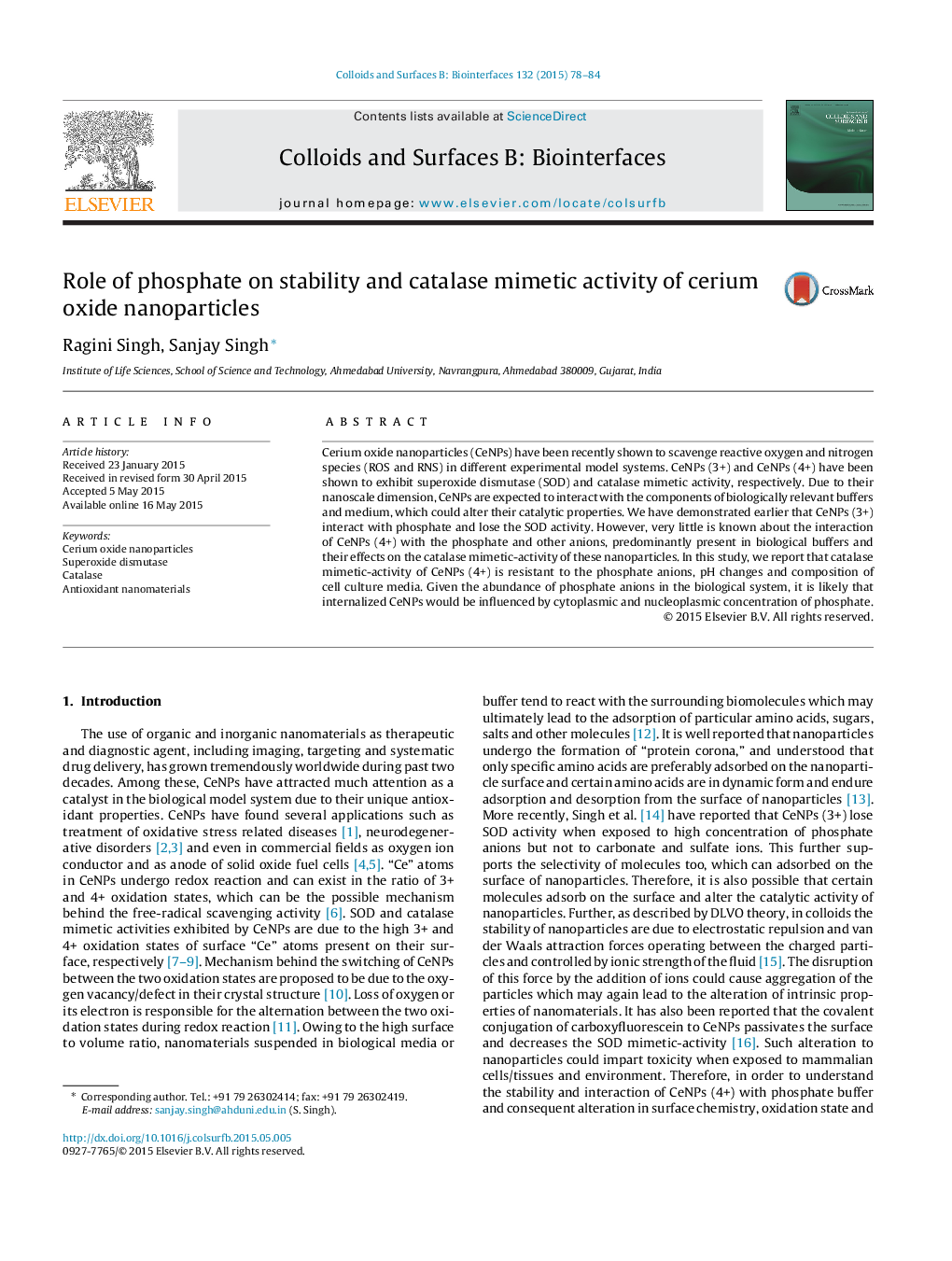| Article ID | Journal | Published Year | Pages | File Type |
|---|---|---|---|---|
| 599180 | Colloids and Surfaces B: Biointerfaces | 2015 | 7 Pages |
•This manuscript provides a comprehensive study about the change in stability and biological catalase mimetic activity of cerium oxide nanoparticles (CeNPs) (4+) under phosphate buffer incubation.•Unlike CeNPs (3+), CeNPs (4+) did not alter their surface chemistry upon phosphate anion exposure.•Different pH solution, sulphate and carbonate anions also did not alter the catalase like activity of CeNPs (4+).•Unlike CeNPs (3+), regenerative capability of CeNPs (4+) was unaffected upon phosphate exposure.
Cerium oxide nanoparticles (CeNPs) have been recently shown to scavenge reactive oxygen and nitrogen species (ROS and RNS) in different experimental model systems. CeNPs (3+) and CeNPs (4+) have been shown to exhibit superoxide dismutase (SOD) and catalase mimetic activity, respectively. Due to their nanoscale dimension, CeNPs are expected to interact with the components of biologically relevant buffers and medium, which could alter their catalytic properties. We have demonstrated earlier that CeNPs (3+) interact with phosphate and lose the SOD activity. However, very little is known about the interaction of CeNPs (4+) with the phosphate and other anions, predominantly present in biological buffers and their effects on the catalase mimetic-activity of these nanoparticles. In this study, we report that catalase mimetic-activity of CeNPs (4+) is resistant to the phosphate anions, pH changes and composition of cell culture media. Given the abundance of phosphate anions in the biological system, it is likely that internalized CeNPs would be influenced by cytoplasmic and nucleoplasmic concentration of phosphate.
Graphical abstractFigure optionsDownload full-size imageDownload as PowerPoint slide
